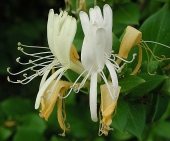ok, realize that this might be sound completely stupid, but here goes:
we've been pickling black walnuts wherein the first step is to soak in a sea salt water bath for a couple weeks. usually that salt water is then thrown away, however, it has a beautiful walnut color and we would like to find an alternative use for it.
i understand that salt water is generally thought of as corrosive to wood, however, i keep thinking of how Venice is built upon timbers submerged in brackish water. most of the DIY walnut stains are water-based recipes (save for one that uses methyl alcohol, which we are not going to try), but was wondering if salt water might also be used as an acceptable stain for wood? the crazy line of thinking derives from the fact that salt has been the go-to preservative for all kinds of organic materials for centuries, may this not apply to wood as well (in small amounts of course)?
we would also most likely add borax to the solution as well, following an 100 year old recipe i found in an old homesteading book.
since i haven't found any evidence for this online (all discussion on salt preservatives on wood are focused on either borates or the dreaded CCA), wanted to throw this past the permies crew and see if this idea had potential merit or was completely offbase.
we are also considering soaking walnut husks in olive oil to create an oil-based stain, but didn't want to dispose of the walnut salt water, as it seems there could be a use for it somewhere.
thanks for any comments, even if they confirm that we are raging lunatics for even considering.
p.s. here's a discussion thread on making walnut stain by constructing a press and by using ammonia as a solvent:
http://forums.finewoodworking.com/fine-woodworking-knots/finishing/stain-black-walnut-husks
would prefer to stay away from the ammonia.





